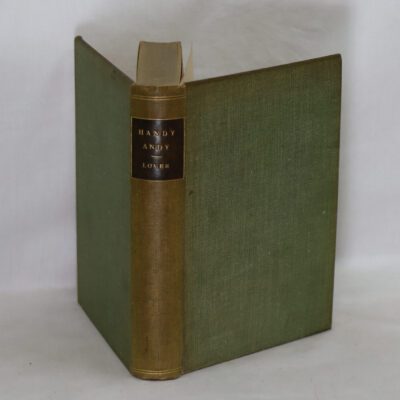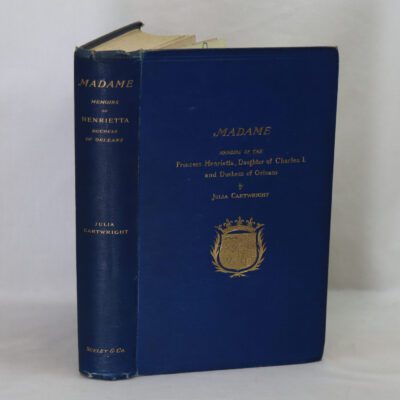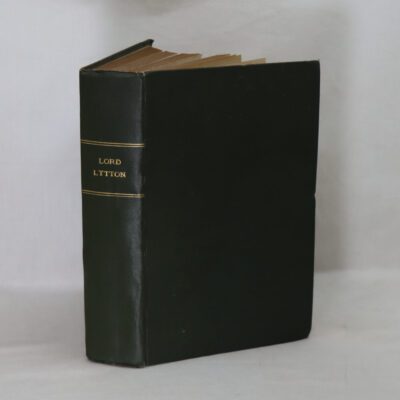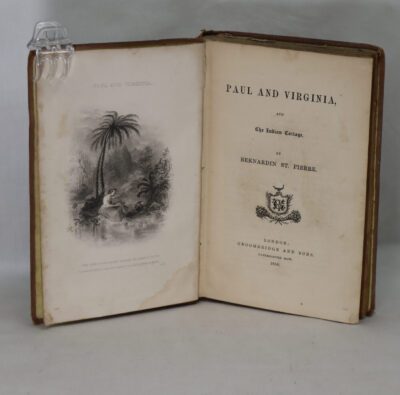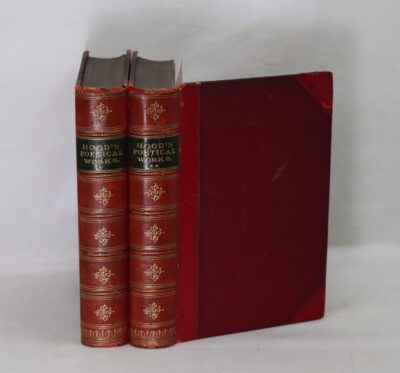Bewick's Select Fables of Aesop and Others..
Printed: Circa 1871
Publisher: Bickers & Son. London
| Dimensions | 13 × 19 × 3 cm |
|---|---|
| Language |
Language: English
Size (cminches): 13 x 19 x 3
Condition: Very good (See explanation of ratings)
FREE shipping
Item information
Description
Tan calf spine with raised banding,green title plate and gilt title. Navy textured cloth boards.
-
- We provide an in-depth photographic presentation of this item to stimulate your feeling and touch. More traditional book descriptions are immediately available
- Note: This book carries a £5.00 discount to those that subscribe to the F.B.A. mailing list
Bewick’s Select Fables of Aesop and Others. In Three Parts. I. Fables Extracted from Dodsley’s. II. Fables With Reflections in Prose and Verse. III. Fables in Verse. To Which are Prefixed The Life of Aesop, and an Essay upon Fable by Oliver Goldsmith. Faithfully Reprinted from the Rare Newcastle Edition published by T. Saint in 1784. With the Original Wood Engravings by Thomas Bewick, and an Illustrated Preface by Edwin Pearson
Hard Cover. FIRST EDITION, Octavo, pp. xi, 312, 4 catalogue. Engraved frontispiece, vignette to title-page and illustrated throughout. Spine lightly toned; minor wear to spine tips and corners. Inscription to reverse of frontispiece: A little foxing to catalogue otherwise contents clean. A very good copy in the handsome original binding.
Note: Isabella Bewick was Thomas’ second daughter (1790-1883) and the longest surviving of his four children, and the Ward family (of Ward’s Directories fame) were close relatives. Edwin Pearson of the Bewick Repository bookshop in London bought Thomas Bewick’s blocks and reprinted a number of his works including this one; he also published pastiche works using genuine Bewick woodblocks, which he offered to collectors at exorbitant prices. This “Select Fables” was a reprint rather than a fake, and was described by Isabella’s older sister Jane, who subscribed for 25 copies, as “a pretty book well got up”. Tattersfield Vol II p., 624; Tattersfield Dealing in Deceit pp., 42-3.
Aesop (c. 620–564 BCE; formerly rendered as Æsop) was a Greek fabulist and storyteller credited with a number of fables now collectively known as Aesop’s Fables. Although his existence remains unclear and no writings by him survive, numerous tales credited to him were gathered across the centuries and in many languages in a storytelling tradition that continues to this day. Many of the tales associated with him are characterized by anthropomorphic animal characters.
Scattered details of Aesop’s life can be found in ancient sources, including Aristotle, Herodotus, and Plutarch. An ancient literary work called The Aesop Romance tells an episodic, probably highly fictional version of his life, including the traditional description of him as a strikingly ugly slave who by his cleverness acquires freedom and becomes an adviser to kings and city-states. Older spellings of his name have included Esop(e) and Isope. Depictions of Aesop in popular culture over the last 2,500 years have included many works of art and his appearance as a character in numerous books, films, plays, and television programs.
Want to know more about this item?

Related products
Share this Page with a friend









